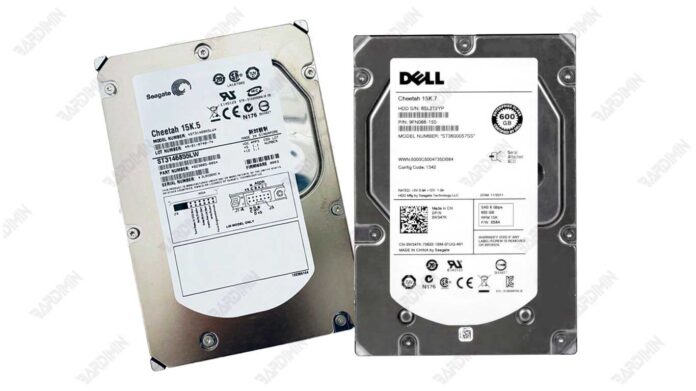In the ever-evolving digital age, hard drives have become the backbone of data storage. From floppy disks to solid-state drives (SSDs), the evolution of storage technology has undergone many transformations.
One innovation that has been at the peak of its popularity is the Hard Drive with a speed of 15,000 RPM. RPM, or Revolutions Per Minute, is a measure that indicates the number of times the platters in a hard drive spin in a minute. This speed is important because the faster the platters spin, the faster the hard drive can read and write data.
A 15,000 RPM hard drive is a storage device designed for high-speed operation. This technology used to be in high demand, especially in enterprise environments, because it manages large volumes of data at incredible speeds. High spin speeds allow for faster data access, which is crucial for applications that require fast responses, such as databases and online transactions.

The 15,000-RPM Hard Drive may have lost its place in the market due to the rise of faster and more efficient SSDs, but studying its history and evolution provides valuable insight into how storage needs and technology may change over time.
A Brief History of a 15,000 RPM Hard Drive
Hard drives of 15,000 RPM first emerged as high-speed storage solutions, offering performance that hard drives with speeds of 7.200 RPM or even 10.000 RPM. Over time, the 15,000 RPM hard drive became the gold standard in the industry for applications requiring fast data access and high throughput.
With much faster read and write speeds, hard drives 15,000 RPM offer significant advantages in terms of latency and IOPS (Input/Output Operations Per Second) compared to lower-speed hard drives.
The use of advanced recording technologies such as PMR (Perpendicular Magnetic Recording) allows hard drives at 15,000 RPM to achieve unprecedented data transfer speeds.
Hard drives 15,000 RPM are widely used in servers and data centers because of their ability to handle intense workloads and the need for fast and reliable data access. In applications that require high performance such as large databases and online transactions, hard drives 15,000 RPM provide the reliability and speed required for non-stop operation.
15,000 RPM hard drives offer higher reliability and durability compared to consumer hard drives, making them the top choice for business-critical applications.
Constraints and Limitations of a 15,000 RPM Hard Drive
- Overheating: High spin speeds on 15,000 RPM Hard Drives generate overheating, which can affect the reliability and lifespan of the device.
- Cooling Solutions: Requires a more complex and sophisticated cooling system to maintain a safe operating temperature.
- High Power Consumption: 15,000 RPM hard drives require more power compared to lower-speed hard drives, which impacts energy efficiency.
- Environmental Impact: Higher energy use also contributes to a larger carbon footprint.
- High Cost: Production costs for 15,000 RPM Hard Drives tend to be more expensive due to the components and technology used.
- Selling Price: Due to high production costs, selling prices to consumers also become more expensive, which can limit market acceptance.
Why are 15,000 rpm hard drives no longer developed?
Hard Drive Development 15,000 RPM has experienced a significant decline due to several main reasons related to the development of Solid State Drive (SSD) storage technology:
SSD Development
- High Speed: SSDs offer significantly higher read/write speeds compared to HDDs, including 15,000 RPM models.
- No Moving Parts: SSDs have no moving mechanical parts, which reduces the risk of physical damage and increases data access speeds.
SSD Reliability
- Shock Resistance: SSDs are more resistant to shocks and vibrations, making them more reliable for use in a variety of conditions.
- Longer Life: Because they have no moving parts, SSDs have a longer lifespan compared to traditional HDDs.
Increasingly Affordable SSD Prices
- Price Drop: With the advancement of technology and mass production, the price of SSDs has become more affordable, making them a more economical option compared to 15,000 RPM HDDs.
The combination of speed, reliability, and competitive price makes SSDs a more attractive choice for consumers and industries, replacing the need for more expensive and less efficient 15,000 RPM HDDs.

